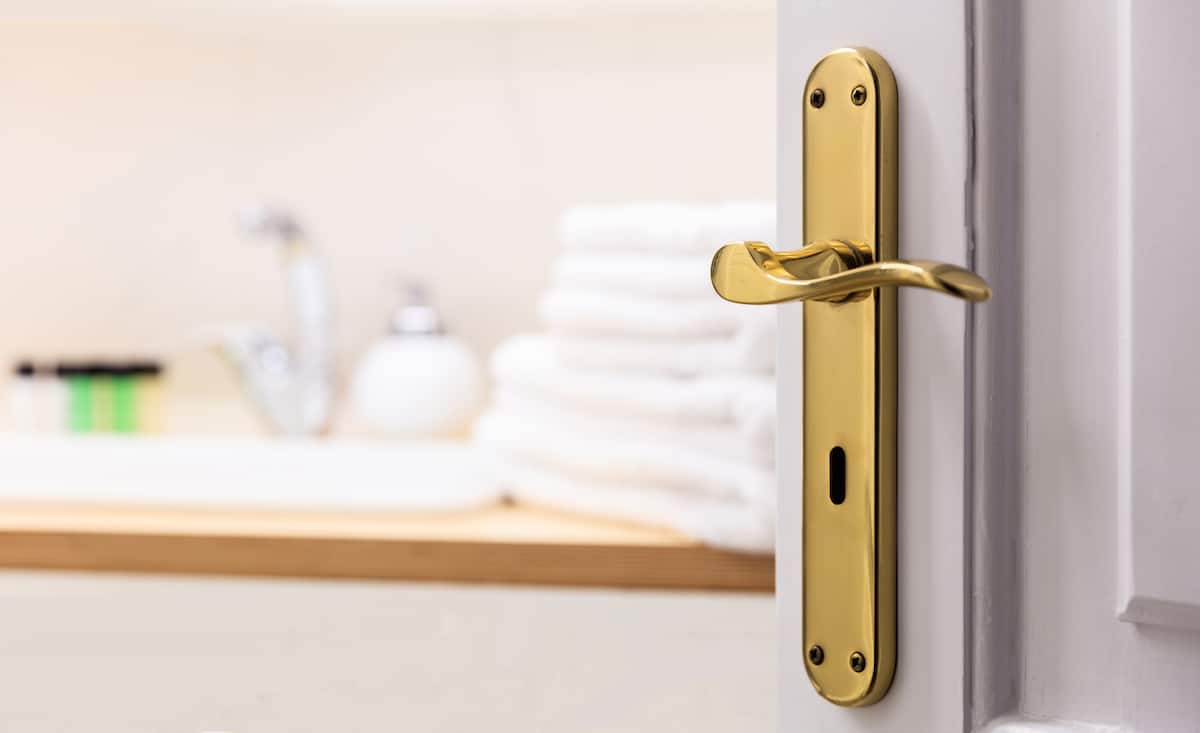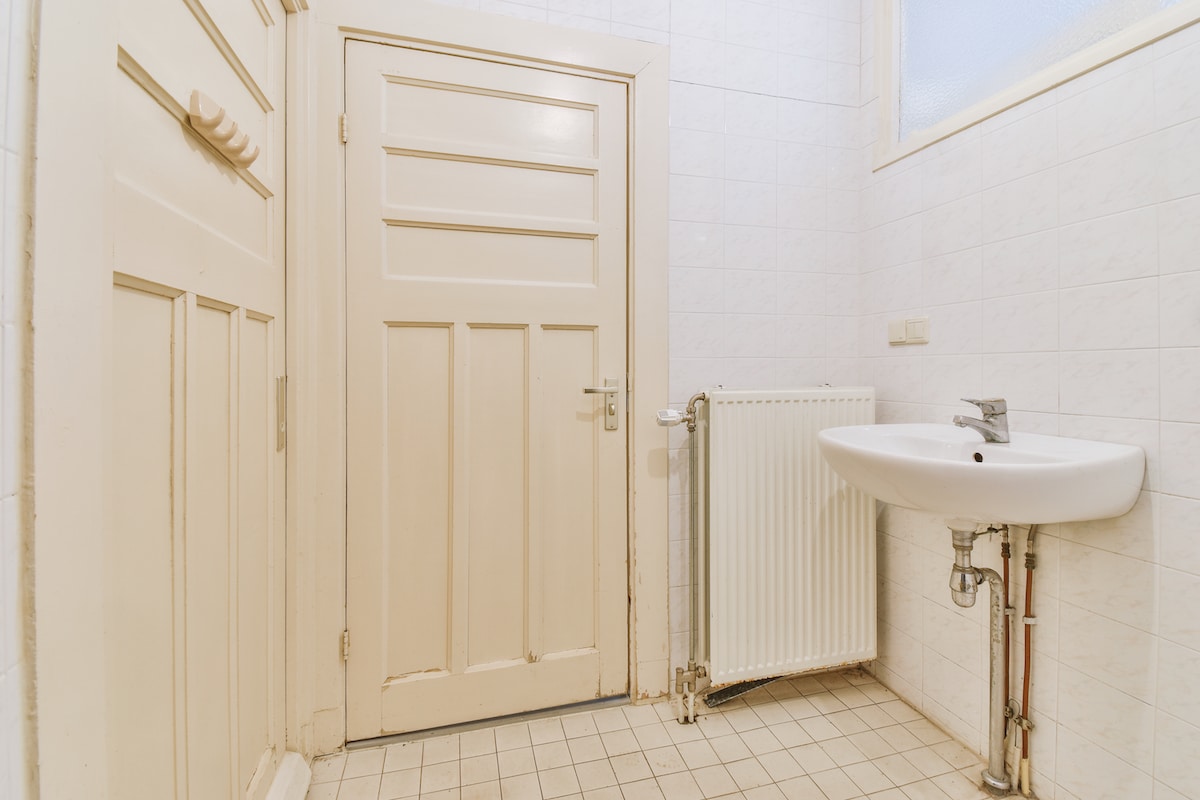Table of Contents
Bathroom doors are often an overlooked aspect of home design, but they play a crucial role in maintaining privacy and comfort. Choosing the right bathroom entryway is essential to ensure that you have a peaceful and private experience while using your restroom. With so many options available, it can be overwhelming to decide which door will work best for you and your family. In this guide, we will explore the different types of bathroom entrances and their features, so you can make an informed decision and create a relaxing and private space in your home.
What Should Be Considered Choosing Bathroom Doors
Swing of the Door
When selecting a bathroom door, consider the swing of the opening to ensure that it does not obstruct the bathroom space. You can choose between a right swing, left swing, inward swing, and outward swing, depending on the size and shape of your bathroom. Doors that swing out are suitable for very small bathrooms, while inward swinging ones require checking the location of the bathroom cabinets and mirrors to ensure they are not blocked.
Size of the Opening
When purchasing a door or pre-hung unit for your bathroom, it is recommended that it be 1/8 inch smaller than the opening in both length and width. If you opt for a pre-hung panel, the width of each jamb should match the thickness of the bathroom wall.
Design
No matter which material you choose, you will have a choice between smooth or paneled doors. While a six-panel unit is a popular design, there are numerous other options available. If you select steel or fiberglass, you can even find panels with embossed designs that mimic the appearance of the wood grain.

Finish
When it comes to choosing the right finish for your bathroom door, there are many factors to consider. While it is important to select a finish that complements the material of your entrance for optimal results, there are other important considerations to keep in mind. For example, you may want to think about the overall style of your bathroom and how the door finish will fit into that aesthetic. Additionally, you may want to consider the durability of the finish and how well it will hold up over time with regular use. Ultimately, taking the time to carefully choose the right finish for your bathroom entryway can help ensure its longevity and enhance the overall look and feel of your bathroom.
Door Handles
When designing your bathroom door, it is important not to forget about the handles. Though they may seem like small detail, bathroom handles can add style to your bathroom decor. They come in a variety of designs, from modern to vintage, and different finishes like brass, nickel, and chrome. When selecting the right door handle, consider the type (privacy or passage), measurements (size of hole, thickness of material, and center to edge of door), material (e.g., cut glass, ceramic, stainless steel, brass), style (Victorian, bohemian, eclectic, transitional), and installation (which is typically easy and comes with instructions).
Door Locks
When it comes to securing your bathroom, you’ll want a lock that is both secure and easy to use. There are four primary types of locks to consider for your bathroom entrance, deadbolt locks, handles locks, passage locks, and privacy function locks. Deadbolt locks are commonly paired with non-locking door handles or knobs, while handle set locks come on the handles for the entryway. Passage locks don’t have a locking system at all, making them ideal for households with young children. Privacy function locks have a button locking mechanism, which you can press to lock and unlock the door.
The Best Types of Bathroom Doors to Preserve Privacy
Frosted Glass Door
Frequently utilized in bathrooms, the frosted glass bathroom door is commonly seen in the form of shower enclosure panels or entryways. Its usage helps maintain an open and spacious atmosphere while providing privacy through its textured appearance. Frosted glass doors offer a range of styles and flexible options for opening and closing.

Standard Swinging Doors
Opting for the conventional swinging model provides straightforward installation and a versatile aesthetic. Swinging doors are available in various styles, ranging from basic, flat-panel designs to elaborate ones with inset panels. Although less prevalent, swinging panels with a glass panel can also be found, typically incorporating frosted glass to ensure privacy.
Barn Door
A sliding barn door offers the advantage of eliminating the swing, making it an excellent choice for tight spaces where a traditional swinging entry would be cumbersome. Its sliding mechanism along a track allows for easy opening and closing.
However, it’s important to note that a sliding barn door moves along the wall outside the bathroom, necessitating a sizable, empty wall space to accommodate it. Additionally, this opening design typically lacks a secure seal when closed, often leaving small gaps that could potentially allow people to see inside.
Due to these design factors, barn doors are generally better suited for primary bathrooms located within a bedroom. Placing a barn entry in the main bathroom near living spaces can compromise privacy, particularly for guests who may feel self-conscious due to the presence of gaps along the door.
Pocket Door
A pocket door is another sliding opening design that goes inside the wall instead of sitting on the outside. While it can be more complicated to install than a sliding barn door and may not be suitable for a novice DIYer, it offers the advantage of allowing you to utilize the wall space outside the bathroom without interference from the doorway. Pocket doors also tend to close tighter than barn doors and can even be locked for increased privacy.
Simple Panel Door
Panel doors are the most commonly used interior doors and are recognized by their square or rectangular patterns. They can feature a single large panel or several small ones. Their popularity, simplicity, and versatility make them a natural fit in many settings.
Conclusion
Choosing the right bathroom door is crucial for ensuring privacy and comfort in your home. Consider factors such as the swing of the opening, size of the opening, design, finish, door handles, and locks when making your decision. The best types of bathroom doors to preserve privacy include frosted glass, standard swinging, barn, pocket, and simple panel doors. By taking the time to carefully choose the right bathroom door for your needs, you can create a peaceful and private space in your home.
Feature Image Credit


